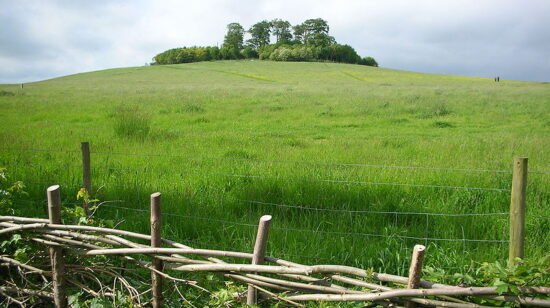Gurkhas have been part of the British Army for almost 200 years, with thousands serving during WW1. But who are they and how did they end up fighting for the British?
The Gurkhas trace their roots back to the legendary 8th century Hindu warrior, Guru Gorakhnath. The term Gurkha is derived from the name of the hill town from which the Nepalese kingdom expanded.
Coming from small rural communities, each battalion typically retained very close family links. This has been considered one of the reasons behind their all or nothing attitude to battle; fighting for friends and family rather than their officers.
Fighting for the British East India Company
When the British East India Company came to blows with the Kingdom of Nepal in 1815, the British were keen to employ defectors from the Nepalese army. The Victorians thought of them as a “martial race” and pronounced them to possess qualities unseen in Western military forces. Gurkhas, they believed, were naturally war like and aggressive in battle, possessing qualities of courage, loyalty, self-sufficiency, physical strength, resilience, orderliness, the ability to work hard for long periods of time, fighting tenacity and military strength.
About 5,000 entered British service, fighting under contract to the East India Company. Then, during the Indian Rebellion of 1857 (India’s First War of Independence), they again fought on the British side, and were integrated into the British Indian Army when it was formed. This was the start of the Gurkha’s formal relationship with the British Army, going on to serve under the Commonwealth Empire during the First World War.
Gurkhas in World War One
Over 200,000 Ghurkha soldiers served during WW1 and 20,000 lost their lives, fighting in France, Egypt, Palestine and Gallipoli. To date, 26 men have been awarded the Victoria Cross – notable considering the award was not extended to the Gurkhas until 1911.
In 1947, when India became independent from the UK, the Gurkha forces were split between the two nations. Six units became part of the Indian Army, with four transferring to British Forces. The Gurkhas have remained part of the British Armed Forces ever since, supplying them with over 250,000 soldiers.
Currently, around 3,500 Gurkha’s are employed by the British Army – serving for up to 30 years, with a minimum of 15 to secure a pension. Considered to be the toughest selection process in the world, up to 28,000 young men compete each year for one of around 200 places.

If a man says he is not afraid of dying, he is either lying or he is a Gurkha.
Former Chief of staff of the Indian Army, Field Marshal Sam Manekshaw
Gurkhas still carry into battle their traditional weapon, an 18-inch long curved knife known as the kukri – the national weapon of Nepal. Each Gurkha carries two Kukri. One for everyday use, and one for ceremonial purposes.
In times past, it was said that once a kukri was drawn in battle, it had to “taste blood” – if not, its owner had to cut himself before returning it to its sheath. Although these days, it’s mainly used for work in the Hills or cooking, the bestowing of the kukri to a new Gurkha recruit is a similar honour to that of the green beret to the British Royal Marine. It is symbolic of becoming part of one of the most elite armed forces in the world.
Want to find out about the archaeology of WW1?
Subscribe to the DigVentures newsletter for the latest news on WW1 excavations and opportunities to get involved.
Love archaeology?
DigVentures was born from a mission: to connect people who love archaeology with opportunities to DO archaeology. Together, we're making groundbreaking new discoveries that everyone can be part of, and creating archaeology content that we can all share, learn from and enjoy. Wherever you live and whatever your background, you can be part of it too.
Become a Subscriber







Comments (1)
It is EXCITING to read and research the history of the Ghurka. Having served 5years in the US Army, Airborne Infantry one realizes the similarities between the 2 groups of Soldiers. I was a 17 year old fresh from high school. I could have had full football scholarships if I had wanted. But my own father had served 3 tours of duty in Vietnam. I wanted to serve as well. It is said of the Ghurka that EVERY SINGLE MAN will fight to the death. We were no different than they. When you jump out of a C-130 Hercules for the first time (or everytime really) you jump out of that plane on the belief that you will land on that ground successfully, or you will be dead. A bloody spot on the ground. Whether it’s fighting or jumping, when you commit yourself to the path of succes or death, you are no different than the Ghurka. I SALUTE MY BROTHER’S THE GHURKA!